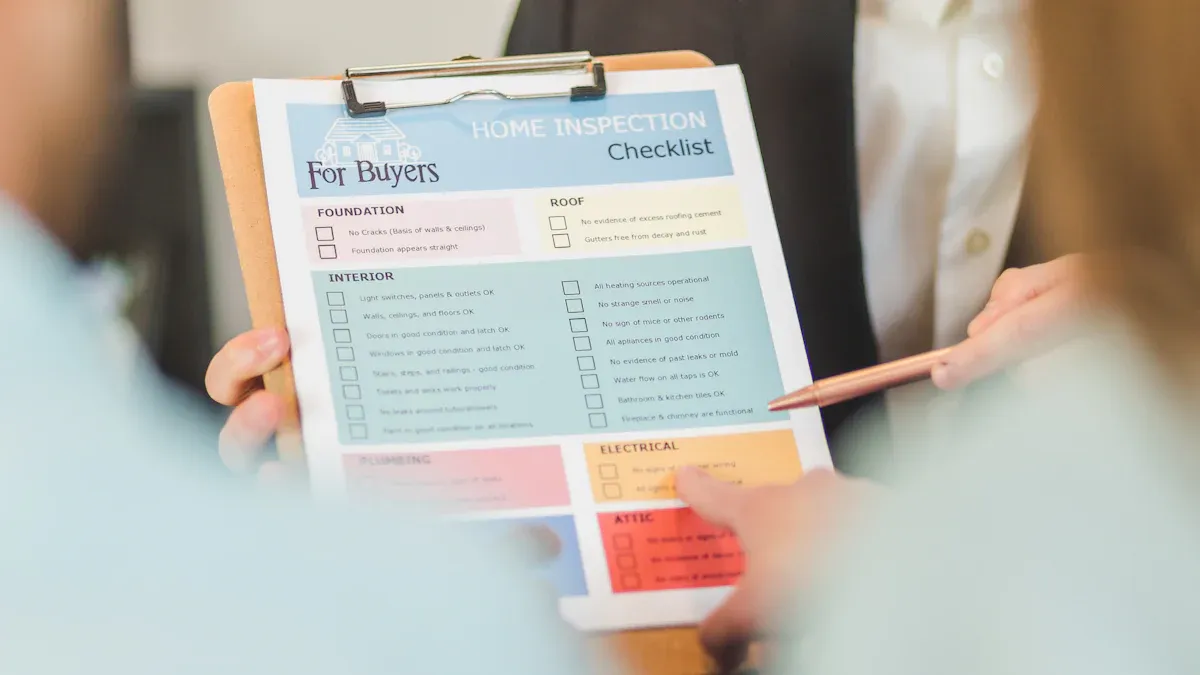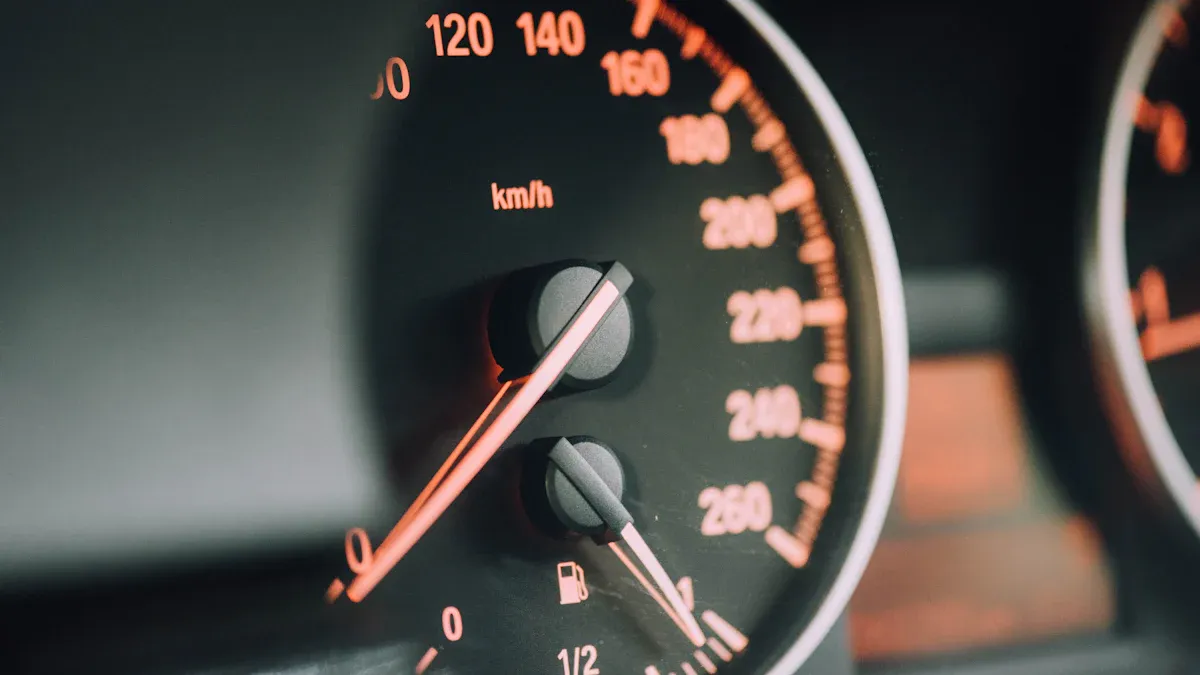
Choosing between a Mileage-Based Schedule and time for car inspections can be hard. Regular maintenance is important for your car’s life and safety. Think about these facts:
80% of car owners who take care of their cars say they last longer.
Inspections help keep you safe and save money while making your car last longer.
Редовни проверки lower the chance of mechanical problems, keeping you and your passengers safe.
By knowing the importance of both a Mileage-Based Schedule and time, you can make smart choices about your car’s care.
Основни изводи
Checking your car every 10,000 miles keeps it safe and working well. It helps find problems early and stops expensive repairs.
Checking every 30 days is important, even if you don’t drive much. It helps find issues that mileage checks might miss.
Use both mileage and time checks for the best car care. This way, your car stays in good shape and is ready to drive.
Think about how you drive and the weather when planning checks. Change your schedule based on how you use your car.
Following the manufacturer’s rules for checks improves your car’s performance and value. Regular care shows buyers that you take care of your vehicle.
Mileage Inspections

Benefits of 10,000-Mile Inspections
Checking your car every 10,000 miles has many benefits. Regular inspections help keep your car safe and working well. Here are some important benefits:
Engine Oil and Filter Change: Changing the oil and filter helps your engine run well. Clean oil lowers friction and wear on engine parts.
Air Filter Inspection: A clean air filter helps fuel efficiency and engine performance. It makes sure your engine gets enough air.
Ротация на гуми: Rotating your tires helps them wear evenly. This practice makes tires last longer and improves handling.
Brake Inspection: Regular brake checks keep you safe. You can find problems like worn pads or low fluid levels before they get worse.
Fluid Checks: Checking coolant, brake fluid, and transmission fluid helps stop overheating and other issues.
Comprehensive Diagnostic Scan: This scan finds possible problems early. It lets you fix issues before they get bigger.
Safety System Verification: Making sure safety features work well protects you and your passengers.
By following a Mileage-Based Schedule, you can keep your car in great shape and avoid expensive repairs later.
Common Misconceptions
Many car owners have wrong ideas about mileage-based inspections. Here are some common beliefs:
High Mileage Equals Poor Condition: Some believe that high mileage means a car is almost done. However, many modern cars can last over 100,000 miles with good care.
Low Mileage Means Better Quality: A well-cared-for, high-mileage car may work better than a neglected, low-mileage one. Maintenance history often tells a better story than mileage alone.
Modern Vehicles Require Less Frequent Inspections: While new cars have advanced technology for maintenance schedules, they still need regular inspections. Experts suggest following a Mileage-Based Schedule to keep your car safe and reliable.
Knowing these misconceptions can help you make smart choices about your car’s care. Regular inspections every 10,000 miles can improve your car’s life and performance.
Time-Based Inspections
Importance of 30-Day Inspections
You should not ignore the need to check your vehicle every 30 days. This is important even if you haven’t driven 10,000 miles yet. Regular time-based inspections can find problems that mileage checks might miss. Here are some reasons why these inspections are important:
Environmental Factors: Dust, dirt, and moisture can harm your vehicle. Regular checks help you find and fix these problems before they get worse.
Wear and Tear: Parts can wear out over time, no matter how much you drive. A 30-day inspection helps you check brakes and tires for any damage.
Fluid Levels: Checking fluid levels often keeps your vehicle running well. Low fluids can cause big issues, like overheating or brake failure.
Safety Checks: You can make sure all safety features, like lights and brakes, work properly. This is very important for your safety and others on the road.
Situations for Time-Based Inspections
Some situations make time-based inspections even more important. Think about these cases where you should focus on inspections based on time:
Heavy Usage: If you use your vehicle for heavy loads or in tough conditions, you need to inspect it more often. The extra stress can cause more wear and tear.
Aging Components: As your vehicle gets older, its parts may break down more easily. Regular inspections help you find problems early.
Seasonal Changes: Changes in seasons can affect your vehicle’s condition. For example, winter can impact tire performance and battery life. Редовни проверки during these times keep your vehicle safe and reliable.
Predictable Wear Patterns: Some parts wear out in a regular way. For example, brake pads wear down steadily over time. Regular inspections help you replace them when needed.
Also, some types of vehicles and equipment need time-based inspections. For example, equipment with important safety systems needs regular checks to avoid dangers. Vehicles used in stable conditions also need regular monitoring to stay in good shape.
By adding a time-based inspection schedule, you can improve your vehicle’s life and safety. Regular checks every 30 days work well with the Mileage-Based Schedule. This way, your vehicle stays in great condition.
Comparing Mileage and Time
When you choose between mileage and time for checking your vehicle, think about different factors. Each way has its good and bad points.
Prioritizing Mileage
You should focus on mileage-based inspections if you drive a lot or go far. This method looks at real wear and tear from how much you use your vehicle. Here are some good points:
Икономичност: You save money by only replacing what you really need.
Real-Time Condition: Mileage checks show how your vehicle is doing based on your driving.
But, mileage inspections can have some downsides. They might miss parts that wear out over time, even if you don’t drive much. For example, rubber parts can break down just because of age.
Prioritizing Time
On the other hand, time-based inspections are very important for vehicles that don’t get driven often. Regular checks every 30 days can catch problems that mileage checks might overlook. Here are some benefits:
Preventive Care: Time-based maintenance helps you take care of parts that age, like fluids and seals.
Seasonal Preparedness: Regular inspections get your vehicle ready for changes in the weather, helping it run well.
However, time-based inspections can lead to replacing parts too soon for vehicles that don’t get used much. You might change parts that still work fine, which wastes money.
Comparison Table
Maintenance Type | Characteristics | Examples |
|---|---|---|
Time-Based PM | Inspections scheduled based on time. | Inspect machine sealant every 2 years, Clean gutters every 12 months |
Meter-Based PM | Inspections based on how much you use the vehicle. | Rotate tires every 5,000 miles, Change machine oil every 10,000 hours |
Combined Approach | Uses both time and usage methods for the best care. | Change oil every 3 months or 3,000 miles – whichever comes first. |
By knowing the good and bad sides of both methods, you can make a good maintenance plan. This plan will help keep your vehicle in great shape, making sure it is safe and reliable on the road.
Driving Habits and Inspections

City vs. Highway Driving
Where you drive affects how you take care of your vehicle. City driving has many stops and starts. This can wear out parts like brakes and tires faster. On the other hand, highway driving is smoother. It puts less stress on your vehicle.
Here’s a quick look at how these driving types change maintenance:
Driving Condition | Impact on Vehicle Maintenance | Recommended Oil Change Interval |
|---|---|---|
City Driving | More wear from stops and idling | 3,000-5,000 miles (conventional), 5,000-7,500 miles (synthetic) |
Highway Driving | Less strain, better engine temperature | 5,000-7,500 miles (conventional), up to 10,000 miles (synthetic) |
Seasonal Considerations
The seasons can also change when you should check your vehicle. Different weather can create special needs for your car. For example, winter can cause battery problems and tire wear. Here are some important things to think about:
Regular checks should consider your driving habits and weather.
Bad weather may need more frequent inspections.
Experts suggest specific checks during tough weather. For example, check wipers and lights before winter. Make sure your brakes and tire pressure are good for safe driving.
Vehicle Types
What kind of vehicle you drive affects how you maintain it. Electric vehicles (EVs) usually need fewer inspections than gas cars. This is because they have fewer moving parts and simpler systems. Here’s a comparison of service times:
Vehicle Type | Recommended Service Interval |
|---|---|
Gas-powered vehicles | At least once a year |
Electric vehicles | Longer times between services |
Also, EVs are 59% less likely to break down than regular cars. This means you can save money on maintenance and wait longer between checks.
By knowing how your driving habits, seasons, and vehicle type affect maintenance, you can make a better Mileage-Based Schedule for your vehicle.
Finding the right mix of mileage and time for car inspections is very important. Regular checks help keep your car safe and working well. Here are some main points to remember:
Make your inspection schedule fit your driving style, type of vehicle, and local weather.
Check your vehicle at least twice a year, and do it more often for older cars or those in tough conditions.
Stick to the manufacturer’s rules for how often to inspect to keep your car running its best.
By keeping a good inspection schedule, you can protect your investment and boost your car’s resale value. Regular care not only stops expensive repairs but also shows buyers that you took care of your vehicle.
Key Factors | Описание |
|---|---|
Good data helps understand how maintenance affects your car’s life. | |
Maintenance Strategies | Different plans can help your car last longer and save money. |
Replacement Indicators | Things like how old your car is and repair costs affect replacement choices. |
By using these plans, you can keep your car safe, dependable, and ready for the road ahead. 🚗✨
Често задавани въпроси
What is a Mileage-Based Schedule?
A Mileage-Based Schedule is a plan for car maintenance. It suggests checking your vehicle every 10,000 miles. This helps keep your car in good shape and stops expensive repairs.
How often should I perform time-based inspections?
Трябва check your vehicle every 30 days. This helps you find problems that mileage checks might miss. It is especially important if you don’t drive often.
Can I combine mileage and time inspections?
Yes, using both methods works well. You can follow a Mileage-Based Schedule and check your vehicle every 30 days. This way, your vehicle stays safe and performs better.
What factors affect my inspection schedule?
Your inspection schedule depends on how you drive, what type of vehicle you have, and the seasons. City driving may need more checks than highway driving.
Why are regular inspections important?
Regular inspections help you find problems early. They make sure your vehicle is safe and reliable. This can help your car last longer.
Вижте също
Значението на мониторинга на дълбочината на протектора за безопасност
Използване на уред за измерване на дълбочината на протектора за прецизни измервания






